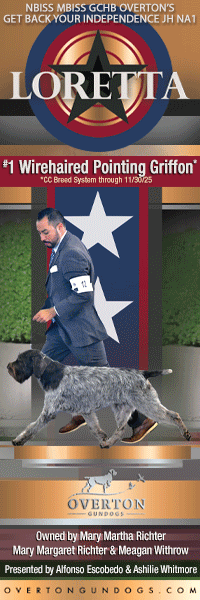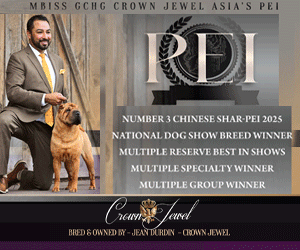Cao Fila de Sao Miguel – aka Saint Miguel Cattle Dog
text and illustrations by RIA HORTER

Statue of Gonçalo Velho Cabral in the capital of São Miguel, Ponte Delgada. He is credited with the rediscovery of the islands of Santa Maria and São Miguel in the Azores.
The FCI (Fédération Cynologique Internationale), the World Canine Organization, includes 86 member countries and contract partners (one member per country). Each issues its own pedigrees and trains its own judges. The FCI ensures that the pedigrees and judges are mutually recognized by all FCI members.
Recognition of a breed by the FCI means that in almost every European country, that breed can be awarded FCI championship prizes. One of the newly recognized breeds is the: Cão Fila de São Miguel (Saint Miguel Cattle Dog, Azores Cattle Dog)
Cão Fila de São Miguel is the original Portuguese name used by many European countries. In England and the United States, the breed is called the Azores Cattle Dog. It is not yet recognized by the AKC.
COUNTRY OF ORIGIN
The Azores is a group of nine islands – Ilhas dos Açores – belonging to Portugal, about 870 miles off the Portuguese west coast. São Miguel and Terceira are the best known. For centuries, the Azores have been an intermediate stopping point between America and the European continent.
Gonçalo Velho Cabral (1400-60) was a Portuguese monk, commander in the Order of Christ, and an explorer credited with the rediscovery of the islands of Santa Maria and São Miguel in the Azores, but Carthaginian and Arab sailors may have encountered the islands long before him. The first Portuguese settlers had populated São Miguel by 1444. Later settlers included slaves, Moorish prisoners, Scots, French, English, Italians and Flemings. The islands were sometimes called the Flemish Islands.
São Miguel has a lot to offer tourists: lakes, sandy beaches, hills and mountains. The capital, Ponte Delgada, is a charming city with beautiful architecture. Bananas, pineapples, grapes, tobacco and tea are grown, but the largest source of income is from livestock breeding. Especially on Terceira and São Miguel, livestock breeders needed a suitable dog to drive cattle and guard the herd.
MOLOSSER TYPES

Detail from the painting Las Meninas (1656) by Diego Velázquez (1599-1660) includes a molosser type of dog, the family pet of Spanish King Felipe IV. This type of dog was taken to the Azores and Latin America by Spanish emigrants. (Prado Museum, Madrid)
In the 16th and 17th centuries, Portuguese colonists took their cattle and dogs with them to their new homelands, for example, Brazil, the Canary Islands and the Azores. Many of these settlers came from the Alentejo and Algarve in southern Portugal, and the Estremadura on the west coast; their dogs were descendants of the Spanish alano and Iberian matin. The alano is a molosser type of dog with a short muzzle, and said to have been present on the Iberian Peninsula (i.e., Spain and Portugal) since the fifth century. It is described and depicted in various manuscripts dating from the Middle Ages.
Spanish molossers came to the islands during the administration of Spain in the 16th and 17th centuries; their descendents are, for example, the present Presa Canario and Presa Mallorquin. In the 16th century, the Azores were visited by English ships during the Anglo-Spanish war; therefore, it is assumed that English mastiffs and bulldogs contributed to the development of modern molosser dogs in the Azores.
Cão DE FILA = PERRO DE PRESA
In his book Saudades da Terra, Gaspard Frutuoso, born in Ponte Delgada in 1522, mentioned the heroism of a cão fila during a hunting party.

Drawing of an ‘alano’ or Spanish Dog (circa 1900) It is obviously an ancestor of the Cão Fila de São Miguel.
In a 19th-century zoological study written by Franciso Borges da Silva, dogs of the Azores were divided into five groups: 1) Filas from the island of Terceira 2) Podengos 3) Rafeiros 4) Fila/Podengo crosses, and 5) gun dogs.
In a Portuguese dictionary dating from 1813, “cão fila” is defined as “a dog that catches a prey and doesn’t release it.” The Portuguese word “fila” is the translation of the Spanish word “presa”; both words mean to hold fast or grip. Therefore, a Cão de Fila is the same type of dog as a Perro de Presa.
BARBADO DA TERCEIRA
Thanks to the islands’ isolation, a distinct type of molosser was developed in the Azores and particularly on the island of Terceira; this dog was called Barbado (Spanish for “bearded”) da Terceira. It is assumed that the present Cão Fila de São Miguel is a descendant of this old cattle dog of Terceira.
Dog writers are not unanimous when it comes to the Barbado da Terceira. The Portuguese Kennel Club still mentions the breed as a national separate breed not recognized by the FCI. Others assert that this type of dog is almost extinct. Pictures of the modern Barbado (Terceira Cattle Dog) show a dog similar in type to the Fila de São Miguel, but with a long, shaggy coat.
From the 1800s, farmers had done some breeding with the Fila de São Miguel, but most did not care about a purebred cattle dog. By the 1980s, Portuguese judge Antonio José Amaral had become concerned about the future of the breed and, together with Dr. Maria de Fatima Machado Mendes Cabral, a veterinarian, he searched for typical dogs in the Azores to register and photograph. The couple tried to convince farmers that the Cão Fila de São Miguel is part of the islands’ cultural history and from centuries-old molossers, something that should not be lost.

Two Boys and a Mastiff (1786-87), an exceptional painting by Francisco de Goya y Lucientes (1746-1828) (Prado Museum, Madrid)
As well, German dog photographer Eva-Maria Krämer wrote an eyewitness report about her stay on the Azores. Everywhere, she saw milking machines in the pastures, guarded by dogs, mostly mongrels, but also typical Filas de São Miguel. According to Krämer, there is a dog show every year during a cattle market in the small city of Furnas.
CORSICA AND PATACO
Eleven Filas were examined by judges Antonio Cabral and Luis Pinto Texeira in Ponte Delgada in 1981. In 1983, Filas in various locations around the island were examined by the well-known Portuguese dog fancier and judge Carla Molinari.
The breed standard was approved by the Portuguese Kennel Club in 1984. The bitch Corsica – the first Fila de São Miguel entered in the Portuguese stud book (1982) – served as a model for the standard. Pataco, a son of Corsica, is said to have been a perfect representative of the breed.

The ears of an uncropped Fila de São Miguel are of medium size and triangular. This is a dog from the French kennel de l’Orée des Charmois.
From this point, the breed’s development went quickly. The Portuguese Kennel Club’s recognition of the breed in 1984 resulted in more dogs being acquired by non-farmers and becoming guard dogs for people’s homes and properties, and show dogs. Today, only a few are still cattle drivers.
The Clube do Cão de Fila de São Miguel was founded in 1991, and in 1992, the city of Ponte Delgada organized a breed show in which 70 Filas made their appearance. In 1995, the breed was provisionally recognized by the FCI; on May 21, 2007, the Cão Fila de São Miguel got its official FCI recognition in Group 2. More information is available on the Portuguese breed club site: ttp://www.caofilasaomiguel.com.
Dogs from São Miguel have been exported to various countries, including the U.S., where interest is growing. When kept as a companion dog, this breed must be socialized at a young age.
BREED STANDARD
In various descriptions of this breed, three words stand out: “rural,” “intelligent” and “aggressive.” However, in the breed standard there is no intimation of aggression. On the contrary, aggression is an eliminating fault.
Of course, the Fila is a cattle driver, a guard dog protecting the herd and its owner’s property. The standard describes its temperament as “A very determined character towards strangers but docile with its owner… While carrying out its duties driving dairy herds it bites low to avoid harming the cows’ udders. However, when dealing with stray cattle it may bite higher.”
The breed has a strong head with parallel planes of skull and muzzle. The skull is broad, square-shaped with a pronounced stop. The muzzle has a straight top line and is a little shorter in length than the skull.

Kennel de la Haute Morinière, France. The sire has cropped ears, his daughter’s ears are not cropped. This is indeed a rustic breed, a part of the Azores cultural history.
As with all molossers, the jaws are powerful and well-developed. A scissor bite is required, but a pincer bite is not a fault. The oval-shaped dark-brown eyes are medium in size and slightly sunken.

In countries where ear cropping is allowed, this breed’s ears are cropped with rounded tips, giving the Fila de São Miguel more or less the appearance of a hyena.
The ears are set above the level of the eyes. When not cropped, the drop ears are of medium size and triangular. In countries where ear cropping is allowed, the ears are cropped with rounded tips, giving the Fila de São Miguel more or less the appearance of a hyena.
The body is strong, well-muscled with a broad and well-let-down chest. The back is straight, the loin broad and well-muscled. The croup is of medium length in relation to the body, and slightly higher than the withers.
TAIL DOCKING
The breed has a high-set tail, slightly curved, and of medium length, or docked at the second or third vertebra in countries where tail docking is allowed.
Fore- and hindquarters are strong, the legs set reasonably apart and well-muscled. The front and hind feet are oval with strong toes and nails.

A male with drop ears and a docked tail. A white mark on the chest is permitted. A robust and hardy breed.
The Fila de São Miguel is a free and easy mover, rolling slightly in the rear. The coat is short, smooth and dense, of harsh texture, always brindled, in fawn, pale fawn with black overlay, or gray, going from light tones to dark. A white mark is permissible on the forehead and from chin to chest, as well as small white marks on both front feet, or both hind feet, or on all four feet.
Height at the withers for males is 50-60 centimetres (20-24 inches); females are 48-58 centimetres (19-23 inches). Weight is between 20 and 35 kilograms (44-77 pounds).
Converging planes of skull and muzzle, and a slightly over- or undershot mouth are severe faults. Aggression or excessive shyness, diverging planes of skull and muzzle, and a seriously over- or undershot mouth are eliminating faults.
Short URL: http://caninechronicle.com/?p=13894
Comments are closed












